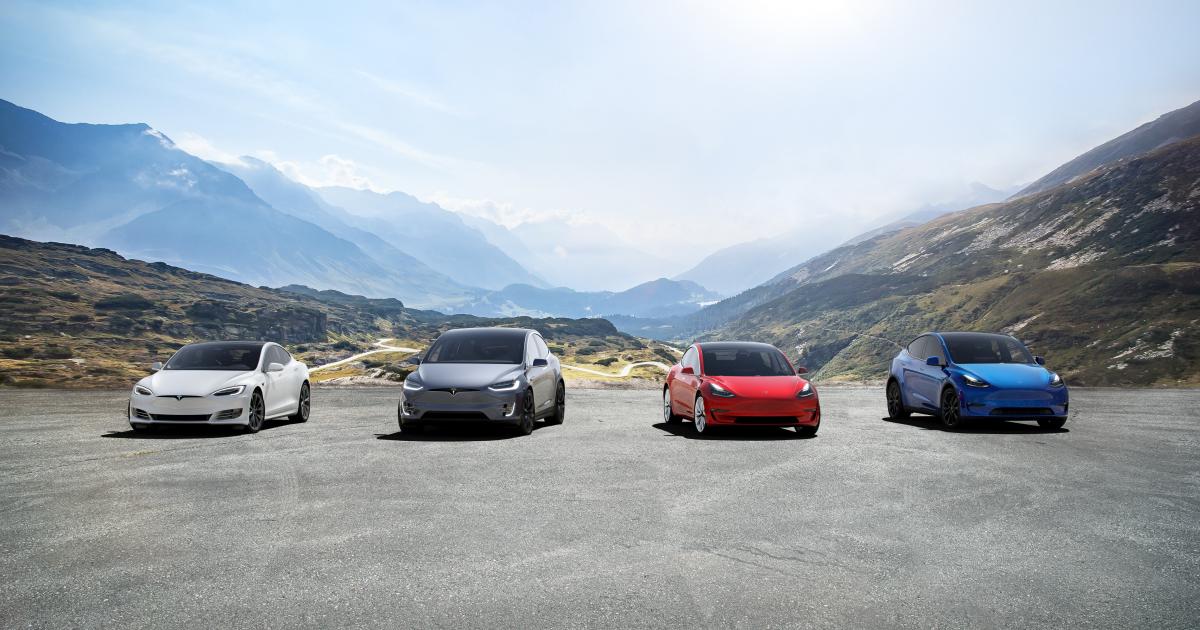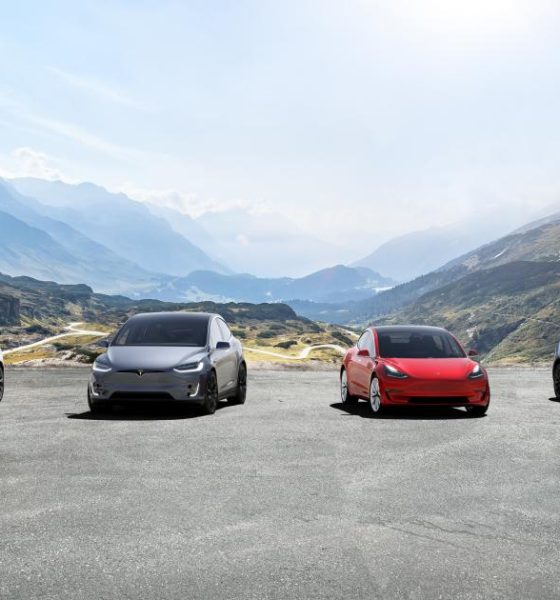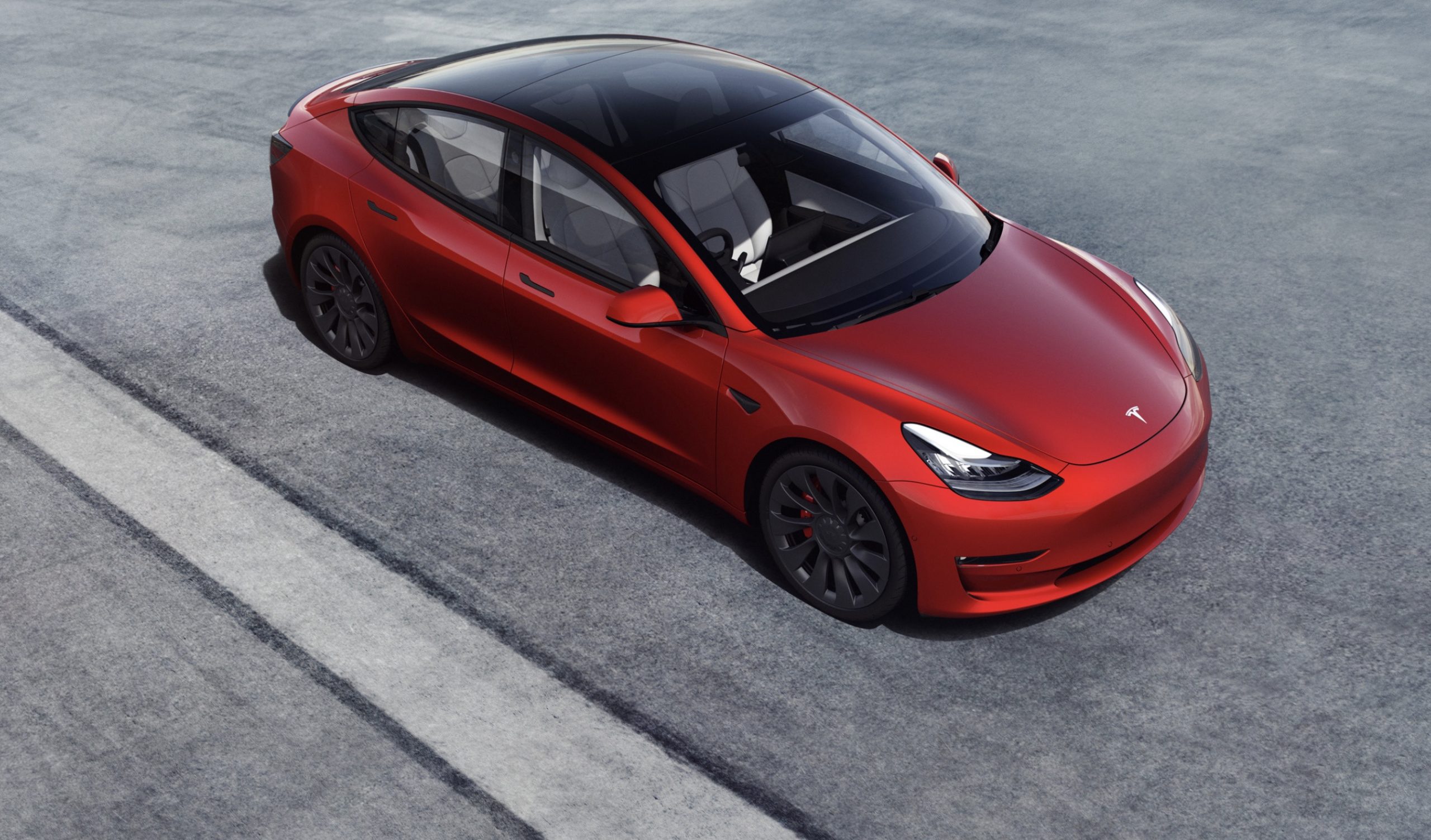

News
Tesla releases Conflict Mineral report, extending history of humane mining practices
Tesla has released its Conflict Mineral Report for the fiscal year ending on December 31, 2019. In the report, Tesla outlined its processes for securing minerals used in its products, ensuring they are obtained in humane ways that do not involve any child labor, human trafficking, or slavery. Many of the minerals are obtained through the efforts of Tesla’s suppliers. The minerals must be “DRC Conflict Free,” meaning that the materials do not benefit “armed groups in the Democratic Republic of the Congo, or any adjoining country.”
Tesla states that its conflict minerals are:
- Columbite-tantalite (Tantalum)
- Cassiterite (Tin)
- Gold
- Wolframite (Tungsten)
- and any derivatives of the above
The company states that any of its products, whether be its electric vehicles or its energy storage products, could contain some portion of these “conflict minerals.”
The materials are considered “conflict-free” as long as they do not benefit any of the armed groups in the DRC, and Tesla requires all of its suppliers to establish several processes to ensure the automaker humanely obtains them. The company writes:
“Tesla requires our suppliers to establish policies, due diligence frameworks, and management systems consistent with the OECD Due Diligence Guidance for Responsible Supply Chains of Minerals from Conflict-Affected and High-Risk Areas (“OECD Guidance”). Tesla expects its suppliers to stay up to date with and to use validated conflict-free smelters and refiners assessed by the Responsible Mineral Initiative (“RMI”) and similar organizations.”
(Credit: Tesla)
Furthermore, Tesla also has internal guidelines for itself that it commits to. These include:
- Continuously evaluating our supply chain to address any risks related to conflict minerals, human trafficking, slavery, and child labor;
- Reviewing suppliers’ practices to ensure their compliance with Tesla’s policy
- Requiring our Tier 1 suppliers to certify that their materials incorporated into Tesla products comply with the applicable laws related to conflict minerals, slavery, child labor, and human trafficking of the country or countries in which they are doing business;
- Disciplining contractors and appropriate parties who fail to meet the requirement of our Code and Policy, including potential termination of contract;
- Ensuring appropriate Tesla employees are aware of issues regarding conflict minerals, human trafficking, child labor and slavery, particularly with respect to mitigating risks within Tesla’s supply chain;
- Investigating if Tesla has a reasonable basis to believe that a supplier may be engaging in human trafficking, slave or child labor, or use of conflict minerals;
- Transitioning away from purchasing goods or services from any supplier that is believed to be engaging in human trafficking, slave or child labor, or use of conflict minerals if the supplier does not take corrective actions.
Tesla also has a four-step Due Diligence process to ensure that all minerals are obtained humanely.
- Establish Strong Company Management Systems
- Identify and Assess Risk in the Supply Chain
- Identify and Assess Risk in the Supply Chain
- Perform Independent Third-Party Audit of Supply Chain Due Diligence
Tesla states in its report that, “Due to its downstream position in our supply chain, any efforts to understand the origin of raw materials rely heavily on the cooperation of our Tier 1 and upstream suppliers. We have uncovered no evidence to date that our suppliers’ sourcing of 3TG materials has contributed to conflict or human rights violations.”
It does, however, list several areas as “covered countries” and states that “Tesla does not directly source from these countries and has no relationship with any companies or individuals located within their national boundaries.” The countries listed are considered “covered” as a part of the U.S. Conflict Minerals Disclosure Rules.
These countries include:
- Burundi
- The Democratic Republic of the Congo
- Rwanda
- Tanzania
- Uganda
- Zambia
Tesla’s primary goal is to accelerate the transition to sustainable energy. Although the country is focused on scalability and handling its increasing demand, it is unwilling to cut corners and intends to continue creating its vehicles in an environmentally friendly way throughout the entire supply chain.
The full report is available here.

News
Tesla Giga Shanghai celebrates 5 million electric drive unit milestone
The milestone was celebrated by the company in a post on its official Weibo account.

Tesla China has reached another manufacturing milestone at Gigafactory Shanghai, rolling out the facility’s 5 millionth locally produced drive unit.
The milestone was celebrated by the company in a post on its official Weibo account. In its post, the Giga Shanghai team could be seen posing with the 5 millionth drive unit.
Giga Shanghai’s major benchmark
The milestone drive unit was produced at Gigafactory Shanghai, which produces the Model Y and the Model 3. In a release, Tesla China noted that its three-in-one integrated electric drive system combines the motor, gearbox, and inverter into a single compact assembly. This forms a powerful “heart” for the company’s electric cars.
Tesla China also noted that its drive units’ integrated design improves energy conversion efficiency while reducing overall weight and complexity, benefits that translate into stronger performance, improved handling, and longer service life for its vehicles.

The new milestone builds on earlier achievements at the same site. In July 2024, Tesla announced that its 10 millionth electric drive system globally had rolled off the line at the Shanghai plant, making it the first self-produced Tesla component to reach that volume.
More recently, the factory also produced its 4 millionth China-made vehicle, a Model Y L. The factory has also continued hitting global production milestones, rolling out Tesla’s 9 millionth EV worldwide late last year, with the landmark vehicle being a Tesla Model Y.
Tesla China’s role
Construction of Giga Shanghai began in January 2019, with production starting by the end of that year. This made it the first wholly foreign-owned automotive manufacturing project in China. The facility began delivering Model 3 vehicles locally in early 2020 and added Model Y production in 2021. The plant is now capable of producing about 1 million vehicles annually.

Throughout 2025, Giga Shanghai delivered 851,732 vehicles, representing a 7.08% year-on-year decline, according to data compiled by CNEVPost. Even so, recent months showed renewed momentum.
In December alone, Tesla China recorded wholesale sales of 97,171 vehicles, including domestic deliveries and exports, making it the company’s second-best monthly total on record, per data from the China Passenger Car Association. Retail sales during December reached roughly 94,000 units, up about 13% year over year.
Investor's Corner
Tesla price target boost from its biggest bear is 95% below its current level

Tesla stock (NASDAQ: TSLA) just got a price target boost from its biggest bear, Gordon Johnson of GLJ Research, who raised his expected trading level to one that is 95 percent lower than its current trading level.
Johnson pushed his Tesla price target from $19.05 to $25.28 on Wednesday, while maintaining the ‘Sell’ rating that has been present on the stock for a long time. GLJ has largely been recognized as the biggest skeptic of Elon Musk’s company, being particularly critical of the automotive side of things.
Tesla has routinely been called out by Johnson for negative delivery growth, what he calls “weakening demand,” and price cuts that have occurred in past years, all pointing to them as desperate measures to sell its cars.
Johnson has also said that Tesla is extremely overvalued and is too reliant on regulatory credits for profitability. Other analysts on the bullish side recognize Tesla as a company that is bigger than just its automotive side.
Many believe it is a leader in autonomous driving, like Dan Ives of Wedbush, who believes Tesla will have a widely successful 2026, especially if it can come through on its targets and schedules for Robotaxi and Cybercab.
Justifying the price target this week, Johnson said that the revised valuation is based on “reality rather than narrative.” Tesla has been noted by other analysts and financial experts as a stock that trades on narrative, something Johnson obviously disagrees with.
Dan Nathan, a notorious skeptic of the stock, turned bullish late last year, recognizing the company’s shares trade on “technicals and sentiment.” He said, “From a trading perspective, it looks very interesting.”
Tesla bear turns bullish for two reasons as stock continues boost
Johnson has remained very consistent with this sentiment regarding Tesla and his beliefs regarding its true valuation, and has never shied away from putting his true thoughts out there.
Tesla shares closed at $431.40 today, about 95 percent above where Johnson’s new price target lies.
News
I subscribed to Tesla Full Self-Driving after four free months: here’s why
It has been incredibly valuable to me, and that is what my main factor was in considering whether to subscribe or not. It has made driving much less stressful and much more enjoyable.

I have been lucky enough to experience Tesla Full Self-Driving for the entire duration of my ownership experience for free — for four months, I have not had to pay for what I feel is the best semi-autonomous driving suite on the market.
Today, my free trial finally ran out, and I had two choices: I could go without it for a period until I felt like I absolutely needed it, or I could subscribe to it, pay $99 per month, and continue to experience the future of passenger transportation.
I chose the latter, here’s why.
Tesla Full Self-Driving Takes the Stress Out of Driving
There are a handful of driving situations that I don’t really enjoy, and I think we all have certain situations that we would just rather not encounter. This is not to say that I won’t ever experience them as someone who has driven a car for 15 years (it feels weird saying that).
I don’t love to drive in cities; I really don’t like driving on I-695 on my way to Baltimore, and I truly hate parallel parking. All three things I can do and have done, all three within the past few weeks, too.
It takes all the stress out of city driving pic.twitter.com/q0SPPrH4HU
— TESLARATI (@Teslarati) December 4, 2025
However, if I can avoid them, I will, and Tesla Full Self-Driving does that for me.
Tesla Full Self-Driving Eliminates the Monotony
I drive to my alma mater, Penn State University, frequently in the Winter as I am a season ticket holder to Wrestling and have been for 16 years now.
The drive to State College is over two hours and over 100 miles in total, and the vast majority of it is boring as I travel on Rt 322, which is straight, and there is a lot of nature to look at on the way.
I am willing to let the car drive me on that ride, especially considering it is usually very low traffic, and the vast majority of it is spent on the highway.
The drive, along with several others, is simply a boring ride, where I’d much rather be looking out the windshield and windows at the mountains. I still pay attention, but having the car perform the turns and speed control makes the drive more enjoyable.
Tesla Full Self-Driving Makes Navigating Easier
Other than the local routes that I routinely travel and know like the back of my hand, I’ve really enjoyed Full Self-Driving’s ability to get me to places — specifically new ones — without me having to constantly check back at the Navigation.
Admittedly, I’ve had some qualms with the Nav, especially with some routing and the lack of ability to choose a specific route after starting a drive. For example, it takes a very interesting route to my local Supercharger, one that nobody local to my area would consider.
But there are many times I will go to a new palce and I’m not exactly sure where to go or how to get there. The Navigation, of course, helps with that. However, it is really a luxury to have my car do it for me.
To Conclude
There was no doubt in my mind that when my Full Self-Driving trial was up, I’d be subscribing. It was really a no-brainer. I am more than aware that Full Self-Driving is far from perfect, but it is, without any doubt, the best thing about my Tesla, to me.
It has been incredibly valuable to me, and that is what my main factor was in considering whether to subscribe or not. It has made driving much less stressful and much more enjoyable.
🚨 How I’ve gotten Tesla Full Self-Driving for free…until now
Watch me subscribe to Tesla FSD! https://t.co/bjK7EEOptR pic.twitter.com/cs5CmN5PdJ
— TESLARATI (@Teslarati) January 7, 2026








